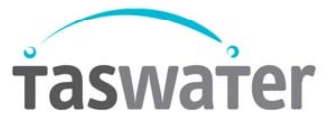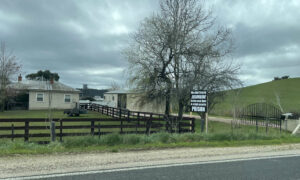Media release – Office of the Tasmanian Economic Regulator, 21 June 2024
REPORT ON THE STATE OF THE TASMANIANWATER AND SEWERAGE INDUSTRY 2022 -23
Today the Tasmanian Economic Regulator published its latest report on Tasmania’s water and sewerage industry. The Report provides a review of TasWater’s performance in 2022-23.
Tasmanian Economic Regulator, Mr Joe Dimasi, said that TasWater’s performance against drinking water quality and customer service standards was pleasing, but the high level of unaccounted for water continued to be an issue, both in terms of the potentially inefficient use of a limited resource and its effect on TasWater’s bottom line.
TasWater continued to meet safe water drinking targets in 2022-23. One hundred percent of TasWater’s reticulated water customers received water that met microbiological compliance standards. No water systems operated under boil water alerts or long-term public health (do not consume) alerts during year. However, several short-term public health alerts were issued.
TasWater’s call centre performance improved slightly in 2022-23, with 90.5 per cent of calls answered within 30 seconds and 94.6 per cent of calls resolved upon first contact. TasWater received 3.3 per cent fewer complaints than it did in 2021-22. Water quality, including taste, colour and odour, continued to be the most common reason for customer complaints.
The number of residential customers repaying a debt fell by 13.6 per cent in 2022-23 but average debt levels increased. At the end of 2022-23, 4 495 residential customers were repaying an average debt of $1 425. The number of customers on TasWater’s hardship program increased to 636 and the average debt at the time of entering the hardship program was $2 996. Seven customers had their water supply restricted for non-payment in 2022-23.
The Tasmanian Economic Regulator continues to be concerned at the volume of water that TasWater cannot account for. The Regulator’s expectations were set in its 2022 investigation into TasWater’s prices and services, which included a target of no more than 20 per cent of sourced potable water being unaccounted for in 2022-23, decreasing to 17 per cent in 2025-26. As part of its Non-Revenue Water Reduction Strategy, TasWater installed 68 district metered areas in 2022-23 to improve its network monitoring and used acoustic leak sensor technology to improve its ability to locate hidden leaks.
However, TasWater has estimated that 28 per cent of the water it sourced was unaccounted for in 2022-23, a marginal improvement on 29 per cent in 2021-22.
TasWater’s prices for water and sewerage increased by 3.5 per cent in 2022-23. However, this was partly offset by a fall in average residential water consumption. The typical annual bill for a Tasmanian household using the average of 173 kL of water per year was $1 270, an increase of $38, or 3.1 per cent, compared to 2021-22.
TasWater’s underlying profit, which excludes contributed assets revenue, was $31.2 million in 2022-23, compared to $31.9 million in 2021-22. Total capital expenditure was $209.2 million, which included the continuation of its Bryn Estyn water treatment plant upgrade (since completed in September 2023) and a number of other major projects. TasWater paid $24.0 million in dividends to its local government shareholders.
Latest performance report and fact sheet:
21 June 2024 Report on the State of the Tasmanian Water and Sewerage Industry 2022-23 (PDF 2Mb)
21 June 2024 Key facts from the 2022-23 Report (PDF 243Kb)
Media release – TasWater, 21 June 2024
Continued investment to improve performance
The Tasmanian Economic Regulator’s State of the Industry Report (2022-23) recognises TasWater’s success in meeting key performance targets, alongside the areas of focus for improvement.
General Manager Customer and Community Matt Balfe said the report covers the year ending 30 June 2023 and backs up detail contained in TasWater’s last annual report.
“We manage more than 221,000 water connections, 11,400 km of water and sewer mains, and 38 per cent of the treatment plants run by major water utilities in Australia, all to cater for 2 per cent of the nation’s population.
“This is a large, dispersed network, and while we are proud of the quality of the services we provide for our customers, we don’t shy away from the challenges we face.
“The Economic Regulator has named reducing water loss as a priority moving forward, something we are acting on right now.
“Two years ago, we commenced a $4 million program to install 220 District Metered Areas (DMAs) across the state.
“These DMAs are a network of meters strategically positioned across our network to help identify hidden underground leaks and prioritise their repair.
“To date this financial year, we’ve installed another 88 DMAs bringing the total to 156, with more going in the ground every week.
“As well as finding the hidden leaks, our crews have also been busy attending bursts above the ground that lead to unplanned interruptions.
“The report shows that we fixed these quicker than in the past, taking an average of 176 minutes to restore water to customers against 217 the year before.
“To build on this success we’ve doubled the budget for our linear renewals from 1 July 2024, which will see ageing water mains pulled up and replaced before they burst.
“While the report highlights low reuse water usage for the last financial year, we are projecting our highest result on record this year, a real win for the environment and Tasmanian waterways.
“As the climate changes and the potential for water restrictions increases, greater uptake of our recycled water schemes will free up treated drinking water currently used for irrigation and support economic growth in regional Tasmania.
“Pleasingly, the conservation messaging is being heard resulting in an annual 5KL drop in water use per property.
“We’ve been listening to our customers so we can meet their needs today and hear their priorities for the future.
“As Tasmanians face cost-of-living pressures, our new TasWater Assist program provides support to those who may not have requested assistance in the past.
“While the report shows a lift in the number of people repaying a debt rose to 5,201 in the year to 30 June 2023, this year we have focussed heavily on reducing that number, which year-to-date sits at 4,646.
“As we look to the future, we are talking to Tasmanians so we can hear what issues are important to them, ensuring our next price and service plan (PSP5) reflects the needs of our customers, communities, and the environment.
“Already more than 3,500 Tasmanians have registered to participate and contribute their voices to the future of water in Tasmania.
“I’m confident that while the report outlines some significant challenges, the investment of $1.9 billion across our asset portfolio over the next five years will ensure we can continue to deliver exceptional water and sewerage services for a thriving Tasmania,” Mr Balfe said.
Media release – TSBC, 21 June 2024
TasWater – Drowning in Inefficiency
‘Today’s report by the Economic Regulator on the state of the Tasmanian Water and Sewerage Industry 2022-23, highlights gross inefficiencies of an untouchable organisation which has total control of the water inputs and sewerage outputs of virtually every small business and household in the state’, said Robert Mallett, CEO of the TSBC.
‘If this organisation was a private sector business it would have called in the receivers years ago.
‘The Regulator’s report highlights that: “TasWater’s water losses continue to be the highest of all major Australian water utilities by a substantial margin. Per service connection, TasWater’s real losses were over four and a half times the median for similar sized mainland utilities, which was 69.3 litres per day in 2022-23”.
‘Any organisation that can’t account for 28% of its product should hang its head in shame, said Mr Mallett.’
On a similarly disastrous note, the Report has highlighted that TasWater deals with broken water mains every 2.12Km throughout Tasmania. Surely this must demonstrate a very poor infrastructure, poor maintenance or poor communication with developers who dig up the pipes accidentally and the same is true for our sewerage infrastructure. Surely this is unacceptable at every level.
‘On the brighter side, the Regulator agreed that “TasWater continued to meet safe water drinking targets in 2022-23. One hundred percent of TasWater’s reticulated water customers received water that met microbiological compliance standards”.
‘Tasmanians deserve better, much better, from this local government owned instrumentality and its owners.




























